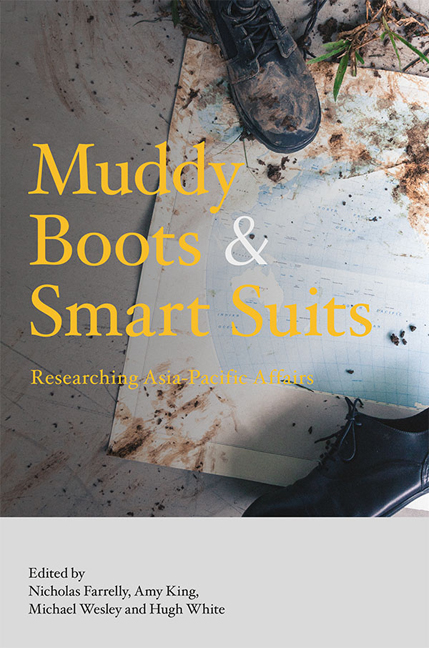Book contents
- Frontmatter
- Contents
- About the Contributors
- 1 Introduction to Research in Asia-Pacific Affairs
- Section I In the Field
- Section II Analysing Politics
- Section III Shaping a Region
- 7 History, Conflict, and Contexts: Remembering World War II in Asia
- 8 Regionalism and Global Powers
- Section IV Conflict and Order
- Section V Policy and Practice
- Bibliography
- Index
8 - Regionalism and Global Powers
from Section III - Shaping a Region
Published online by Cambridge University Press: 12 January 2018
- Frontmatter
- Contents
- About the Contributors
- 1 Introduction to Research in Asia-Pacific Affairs
- Section I In the Field
- Section II Analysing Politics
- Section III Shaping a Region
- 7 History, Conflict, and Contexts: Remembering World War II in Asia
- 8 Regionalism and Global Powers
- Section IV Conflict and Order
- Section V Policy and Practice
- Bibliography
- Index
Summary
Asia has faced multiple drivers of regionalism in the post-Cold War era. These include states’ needs to cooperatively tackle new regional challenges, and a growing desire to pursue common interests regionally. Regionalism is defined as formal state-sponsored regional projects, as distinct from the more informal process of regional building led by non-state actors and commonly referred to as “regionalization” (Nair 2008, p. 111). In regionalism, elites and/or state leaders in the region play important roles in regionbuilding processes, regional integration, and regional movements and initiatives. They push forward regionalism and, to some extent, create regional institutions. However, their efforts are not always successful. One of the big challenges for regionalism is the presence of global powers — states whose power can impact globally — that exist both within and outside the region.
This chapter discusses the relations between regional institutions in the Asia-Pacific and several global powers, namely the United States, China, and Russia. While located in the region, these three great powers have not always been included in regional initiatives. The chapter delves into the interaction of these global powers within several regional institutions such as the Asia-Pacific Economic Cooperation (APEC), the Association of Southeast Asian Nations (ASEAN), ASEAN Plus Three (APT), and the East Asia Summit (EAS). The chapter first provides a short history of the relationship between regionalism and global powers in the Asia-Pacific, before turning to a contemporary picture of regionalism in the region. It then investigates the role of global powers in the development of regionalism by focusing on the four aforementioned regional institutions. Finally, the chapter provides a brief review of the key methodological approaches to studying regionalism and global powers in Asia.
HISTORY OF REGIONALISM IN THE ASIA-PACIFIC
It is often said that APEC was the first form of regionalism in the Asia- Pacific because it drew together countries on both the Pacific-side of Asia as well as the Pacific-side of North and South America. However, regionalism in Asia has a much longer history, originating with Japan's military campaign in Northeast and Southeast Asia in the lead up to the Second World War. Japan's military campaign was underpinned by its vision of “Pan-Asianism”. Pan-Asianism reflects the early movement of regionalism in the Asia-Pacific and is a precursor of contemporary Asian regionalism (Saaler 2007).
- Type
- Chapter
- Information
- Muddy Boots and Smart SuitsResearching Asia-Pacific Affairs, pp. 110 - 124Publisher: ISEAS–Yusof Ishak InstitutePrint publication year: 2017

